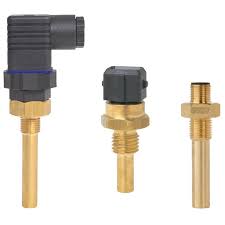Lorem ipsum dolor sit amet, consectetur adipiscing elit. Ut elit tellus, luctus nec ullamcorper mattis, pulvinar dapibus leo.
Temperature switches are devices used to monitor temperature levels and trigger a response when the temperature reaches a specific set point. They are designed to detect changes in temperature and actuate a switch or relay to control other devices or processes. Here are some common types of temperature switches:
1. Bimetallic Temperature Switch: Bimetallic temperature switches use two different metals with different coefficients of thermal expansion bonded together. As the temperature changes, the bimetallic strip bends, which triggers the switch to change its state at a predetermined set point.
2. Gas-Filled Temperature Switch: These switches use a gas-filled temperature-sensitive bulb connected to a capillary tube. As the temperature changes, the expansion or contraction of the gas causes the pressure in the capillary tube to change, actuating the switch at the set point.
3. Liquid-Filled Temperature Switch: Liquid-filled temperature switches use a liquid-filled bulb or tube that expands or contracts with temperature changes. The movement of the liquid triggers the switch action at the desired temperature set point.
4. Thermostat Switch: Thermostats are a type of temperature switch commonly used in HVAC systems, appliances, and heating/cooling devices. They use a temperature-sensitive element that expands or contracts to control heating or cooling equipment based on the set temperature.
5. Electronic Temperature Switch: Electronic temperature switches use temperature sensors, such as thermocouples or resistance temperature detectors (RTDs), to measure temperature. The electronic circuitry compares the temperature reading to the set point and triggers the switch when the temperature reaches the desired level.
6. Digital Temperature Switch: These temperature switches use digital displays to show the temperature and allow for easy programming of set points. They can incorporate various temperature sensors and offer more advanced features for precise temperature control.
7. Capillary Temperature Switch: Capillary temperature switches consist of a temperature-sensitive element connected to the switch through a capillary tube. The temperature changes cause the fluid in the capillary tube to expand or contract, actuating the switch at the desired temperature.
Temperature switches are commonly used in various industries to ensure safety, protect equipment, and control processes that are sensitive to temperature changes. The choice of temperature switch depends on factors such as the application, temperature range, accuracy requirements, response time, and environmental conditions.
